

Fire and Rescue NSW. Eurocopter EC145. The Eurocopter EC145, now known as the Airbus Helicopters H145, is a twin-engine light utility helicopter developed and manufactured by Eurocopter, which was rebranded as Airbus Helicopters in 2014.
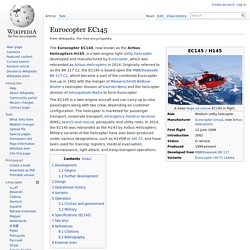
Originally referred to as the BK 117 C2, the EC145 is based upon the MBB/Kawasaki BK 117 C1, which became a part of the combined Eurocopter line-up in 1992 with the merger of Messerschmitt-Bölkow-Blohm's helicopter division of Daimler-Benz and the helicopter division of Aérospatiale-Matra to form Eurocopter. The EC145 is a twin-engine aircraft and can carry up to nine passengers along with two crew, depending on customer configuration. The helicopter is marketed for passenger transport, corporate transport, emergency medical services (EMS), search and rescue, parapublic and utility roles. Westpac Life Saver Rescue Helicopter Service. The Westpac Life Saver Rescue Helicopter Service is a helicopter surf lifesaving service that operates in Australia.
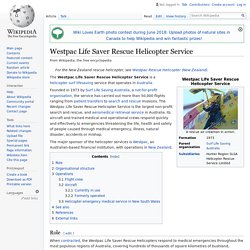
Founded in 1973 by Surf Life Saving Australia, a not-for-profit organisation, the service has carried out more than 50,000 flights ranging from patient transfers to search and rescue missions. The Westpac Life Saver Rescue Helicopter Service is the largest non-profit search and rescue, and aeromedical retrieval service in Australia. Its aircraft and trained medical and operational crews respond quickly and effectively to emergencies threatening the life, health and safety of people caused through medical emergency, illness, natural disaster, accidents or mishap. The major sponsor of the helicopter services is Westpac, an Australian-based financial institution, with operations in New Zealand. Role[edit] The helicopters are tasked to undertake a number of different missions:[citation needed] Organisational structure[edit] Operations[edit] Flight crew[edit] Aircraft[edit]
Danish Emergency Management Agency. DEMA is capable of deploying abroad on request from another state or an international organisation.
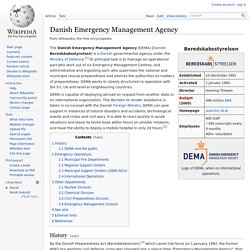
WA will need twice as many firefighters in 2030 to cope with climate change – report. Western Australia will need twice as many firefighters in 2030 to cope with increased bushfire risks caused by climate change, a report by the Climate Council has found.
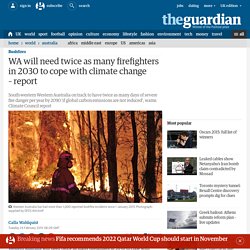
The Heat Is On report, released on Tuesday, said south-western WA, one of the most fire-prone areas in the world, was on track to have twice as many days of severe fire danger per year by 2090, “if global carbon emissions are not reduced”. “To stabilise the climate and eventually halt the rising trend of extreme heat, carbon emissions need to be cut rapidly and deeply,” the report said. “Most of the world’s known reserves of coal, oil and gas will need to be left in the ground, including over 90% of Australia’s coal reserves.” WA has had more than 1,000 reported bushfire incidents since 1 January. On Tuesday afternoon an out-of-control bushfire at Casuarina, 40km south of Perth, was declared a threat to lives and homes by the Department of Fire and Emergency Services (Dfes). Australia volunteer bush fire brigade.
Wa emergency fire services new headquarters cost. Study confirms cancer cluster among CFA Fiskville firefighters in Victoria. Firefighters who worked at a Country Fire Authority facility in Victoria’s Ballarat region have a higher incidence of skin, testicular and brain cancers, a comprehensive study has found.
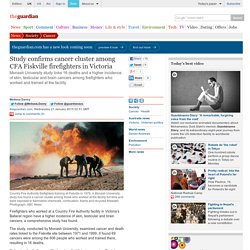
The study, conducted by Monash University, examined cancer and death rates linked to the Fiskville site between 1971 and 1999. It found 69 cancers were among the 606 people who worked and trained there, resulting in 16 deaths. Releasing the findings on Wednesday, the Victorian premier, Daniel Andrews, told reporters the research confirmed “beyond any reasonable doubt” that there was a statistically significant increase in cancers associated with firefighters who worked at the site. “This is a very tragic report,” he said. “The evidence is becoming clearer and clearer each day that people have become sick because of this place. WA bushfires: Two firefighters trapped in burning ute. Two volunteer firefighters were trapped in a burning ute while fighting a bushfire at a Department of Defence facility east of Perth on Tuesday.

Emergency services minister Joe Francis said the Bindoon Bushfire Brigade volunteers were forced to shelter in their LandCruiser after being surrounded by flames. It’s one of the most potentially serious incidents survived by firefighters in a week that has seen 40 firefighters injured while fighting the Sampson Flat fire in the Adelaide Hills in South Australia, and a Victorian firefighter receive facial burns while fighting a grassfire. Francis said he did not yet know how the volunteers had become trapped or why they were working in an area that became dangerous. “Any fire is unfortunately very unpredictable in its behaviour,” he said. South Australia fires: Hopes rise of halting Adelaide blaze. 6 January 2015Last updated at 22:47 ET Firefighters tackling a large bushfire in South Australia say they are growing more confident they can contain it.
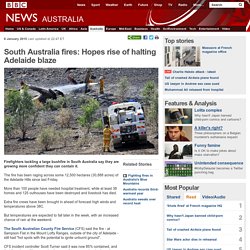
The fire has been raging across some 12,500 hectares (30,888 acres) of the Adelaide Hills since last Friday. State Emergency Service. Western Australia SES OKA 4wd vehicle Victorian SES volunteers working to free the victim of a car crash The State Emergency Service (SES) is an Australian volunteer organisation that provides emergency help during and after declared (natural or otherwise) disasters.
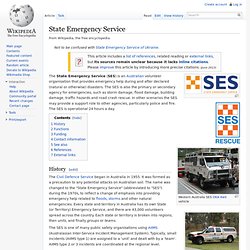
The SES is also the primary or secondary agency for emergencies, such as storm damage, flood damage, building damage, traffic hazards and road crash rescue. In other scenarios the SES may provide a support role to other agencies, particularly police and fire. Bombardier 415. The Bombardier 415 Superscooper (formerly Canadair CL-415 SuperScooper) is a Canadian amphibious aircraft purpose-built as a water bomber.
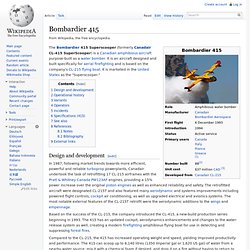
It is an aircraft designed and built specifically for aerial firefighting and is based on the company's CL-215 flying boat. It is marketed in the United States as the "Superscooper. " Design and development[edit] In 1987, following market trends towards more efficient, powerful and reliable turboprop powerplants, Canadair undertook the task of retrofitting 17 CL-215 airframes with the Pratt & Whitney Canada PW123AF engines, providing a 15% power increase over the original piston engines as well as enhanced reliability and safety.
Supacat - High Mobility and All Terrain Vehicles - Supacat. Department of Fire and Emergency Services. The Department of Fire and Emergency Services (DFES), formerly the Fire and Emergency Services Authority of Western Australia (FESA), is a statutory government authority created in January 1999 to administer the following legislation within the state of Western Australia:[1] Fire and Emergency Services Authority of Western Australia Act 1998Fire Brigades Act 1942Bush Fires Act 1954Emergency Services Levy Act 2002Emergency Management Act 2005 This is effected through the management of the following services: The Fire and Rescue ServiceThe Volunteer Fire and Rescue ServiceThe Bush Fire ServiceThe State Emergency ServiceVolunteer Marine Rescue ServicesEmergency Management ServicesCommunity Safety Services.
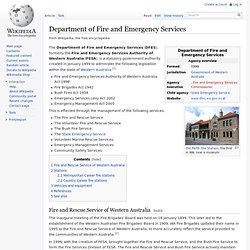
Rescue stations australia. Rnli. Rigid-hulled inflatable boat. RNLI inshore rescue boat during Falmouth Lifeboat Day, August 2006 Uses include work boats (supporting shore facilities or larger ships) in trades that operate on the water, as well as use as lifeboats and military craft, where they are used in patrol roles and to transport troops between vessels or ashore. History[edit] See Inflatable boat – History for earlier history. Origins in Britain[edit] In 1964, Rear-Admiral Desmond J. By 1966 the students had built a further five rigid inflatable boats – Aphrodite (15 ft), Triton (16 ft) and X1–X3. By that time Des Hoare had concluded that for the conditions under which they operated a boat of around 18 feet long was optimum which led to X4 (launched 1966), X5 and X6 (launched 1967), and X7 to X8 (launched 1968).
Bushmaster Protected Mobility Vehicle. The Bushmaster Protected Mobility Vehicle or Infantry Mobility Vehicle is an Australian-built wheeled armoured vehicle. The Bushmaster is based on a design by Irish company Timoney Technology Ltd under a licence agreement with Perry Engineering in Adelaide; that licence was sold, with permission granted by Timoney as required by the licence terms, to Thales Australia.